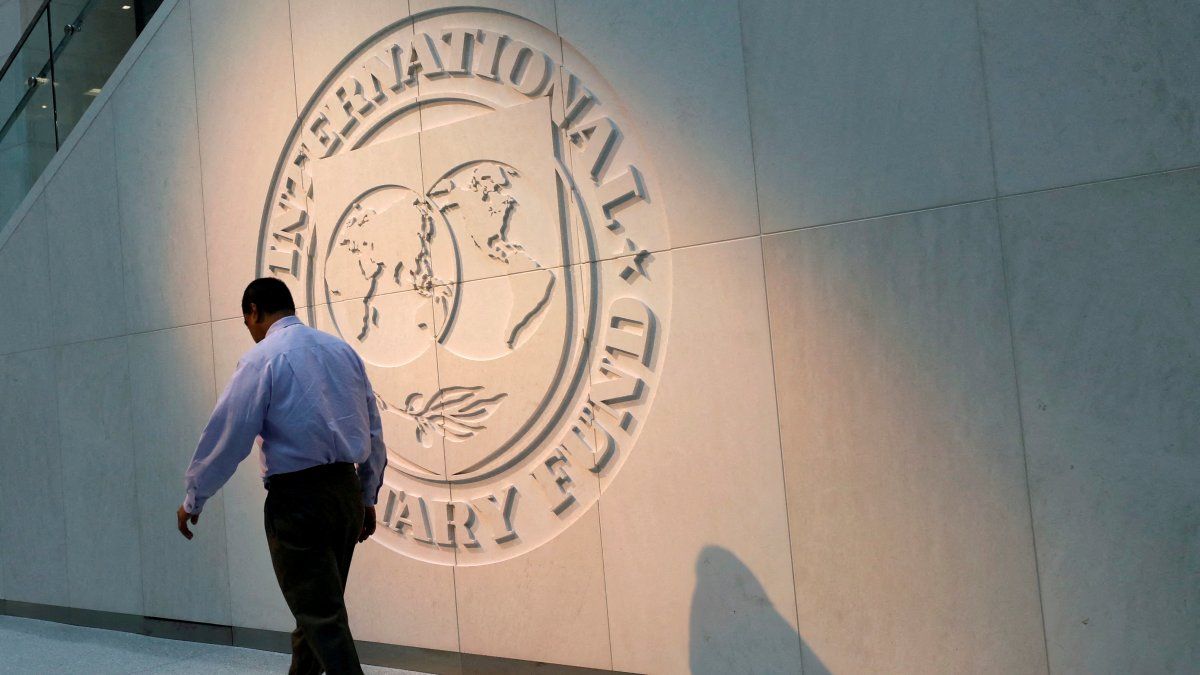GROWTH PROJECTIONS_July_2023 (2).png
Among the positive aspects of the global economy, Gourinchas noted that the Covid-19 health crisis is officially over and supply chain disruptions are back to pre-pandemic levels.
Furthermore, “economic activity in the first quarter of the year proved to be resistantdespite the challenging environment, amid surprisingly strong labor markets.”
He also noted that energy and food prices have fallen sharply from their war-induced peaks, allowing “global inflationary pressures decrease faster than expected”.
And the financial instability that followed the March banking turmoil “continues contained thanks to the energetic action of the American and Swiss authorities”.
The foregoing does not mean, in the Fund’s opinion, that the economic horizon is clear. For now, be warned a slowdown in advanced economies, where growth will fall from 2.7% in 2022 to 1.5% this year and remain subdued at 1.4% next year. In particular, “the euro area, still reeling from last year’s sharp rise in gas prices caused by the war, will slow sharply”warned the economist.
On the contrary, it is expected that growth in emerging markets and developing economies picks up with year-on-year growth accelerating from 3.1% in 2022 to 4.1% this year and next.
This average, however, hides significant differences between countries as, while emerging and developing Asia is growing strongly at 5.3% this year, many commodity producers will suffer a decline in export earnings.
For the special case of Latin America and the Caribbean, growth is expected to slow from 3.9% in 2022 to 1.9% in 2023and that it stands at 2.2% in 2024.
This lower growth reflects the recent moderation of the rapid recovery registered last year due to the reopening after the pandemic, as well as the fall in the prices of raw materials,
In the particular case of Brazil, Argentina’s main trading partner, it is expected an increase in GDP of 2.1% in the yeardriven by the increase in agricultural production in the first quarter, which has had a positive impact on activity in the services sector.
Risks to the economy
Referring to the risks, Gourinchas maintained that “There are increasing signs that global activity is losing momentum.”
In this sense plays the global tightening of monetary policy that has pushed interest rates into contractionary territory. In Chinain particular -one of Argentina’s main trading partners- the recovery shows signs of losing steam amid continuing concerns about the real estate sector.
On the other hand, core inflation, which excludes energy and food prices, remains well above central bank targets and is expected to gradually decrease.
More worrisome, the IMF estimates that core inflation in advanced economies will remain unchanged at an average annual rate of 5.1% this year, before declining to 3.1% in 2024. In this regard, the economist noted that “Clearly, the battle against inflation is not yet won.”
The Fund’s calculations show that real wages have declined by about 3.8% between the first quarter of 2022 and 2023 for large emerging market and advanced economies. In this context, Gourinchas stated that “given that the profit margins of average companies have grown considerably in the last two years, I remain confident that there is room to accommodate the rebound in real wages without triggering a wage-price spiral.”
Another of the risks that the organism warns is that inflation could remain high and even increase if further shocks occur, such as those from an escalation of the war in Ukraine and extreme weather eventswhich would induce a more restrictive monetary policy.
It also warns that the turbulence in the financial sector could return as markets adjust to further policy tightening by central banks. And China’s recovery could slow down, partly due to unresolved real estate problems, which have negative cross-border contagion effects.
Finally, it is indicated that sovereign over-indebtedness stresses could spread to a broader group of economies.
But, on the positive side, the Fund also believes that inflation could decline faster than anticipatedthus reducing the need for a restrictive monetary policy, and domestic demand could once again prove resilient.
It can be seen that, in most economies, the priority continues to be achieving sustained disinflation while ensuring financial stability. Therefore, it recommends that central banks keep their focus on restoring price stability, strengthening financial supervision and risk vigilance.
The Fund advises that, should market tensions materialize, countries should provide liquidity without delay while mitigating potential moral hazard. Also “they should build fiscal reserves, and ensure that the composition of the fiscal adjustment directs support towards the most vulnerable”.
Source: Ambito




